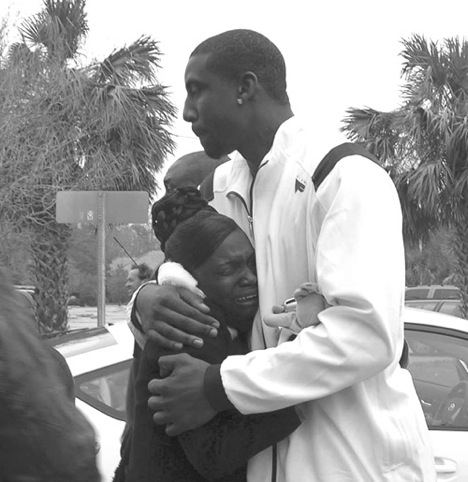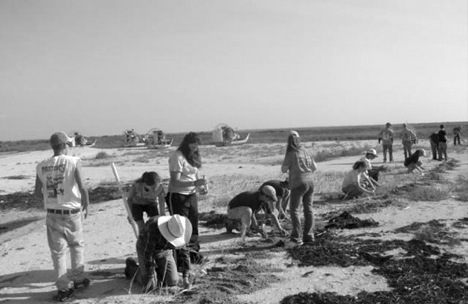 |
June 2009
|
June 2009 // Volume 47 // Number 3 // Ideas at Work // v47-3iw1
Photos Can Inspire a Thousand Words: Photolanguage as a Qualitative Evaluation Method
Abstract
Finding ways to encourage expression of individuals who are young, shy, or have limited verbal abilities can be challenging for evaluators. Photolanguage can be used to aid personal expression and small group interaction and as a tool to enhance qualitative evaluation activities. This method offers an interesting evaluation process that uses black-and-white photographic images specifically chosen for their aesthetic qualities; their ability to stimulate emotions, memory, and imagination; and their capacity to stimulate reflection in the viewer. Evaluators may find Photolanguage provides a valuable tool for use with evaluation participants who experience barriers to involvement, actual or perceived.
Background
Photolanguage presents a technique to help individuals express themselves more fully when asked questions. Research has shown the Photolanguage method facilitates increased communication in sensitive audiences (Bessell & Burke, 2005). Although several researchers have included images to enhance their understanding of a particular situation or event (Baptist, Belisle, Péchenart, & Vacheret, 1991; Bessell & Burke, 2005; Lillis, 2001), the technique is still considered innovative. An Australian version of Photolanguage was developed by Jan Cooney and Kevin Burton (1986). This commercially produced evaluation resource includes 130 photos in this resource feature images of people, landscapes, and scenes. Cultural, psychological, sociological, and photographic criteria were considered in developing this collection.
Series of photos are selected specifically for use in Photolanguage to invoke reaction from individuals to stimulate and encourage their communication. The photographs are typically black-and-white images in order to allow viewers to focus on the topic or essence of the photos rather than being distracted by extraneous colors and images (Figures 1 and 2).
Figure 1.
Image of People
Figure 2.
Image of Landscape with People
When to Use Photolanguage
Viewing the symbolic photos in Photolanguage serves to stimulate a person's subconscious and past experiences and allows those experiences to emerge as conscious expression. This is particularly helpful when an evaluator encounters program evaluation participants who are young and often limited in vocabulary (Bessell & Burke, 2005). For example, an evaluator might use this method with a group of 9-11 year old youth participants and say "Select a photo that helps you describe what you learned during your week at Challenge Camp."
This method can also aid those individuals who might be reserved by nature to participate in evaluation more fully. An evaluator might ask a group of soon-to-be released male parolees "Please select a photo that helps you describe how you felt at the beginning of the Dads Make a Difference! Program. Then select a second photo that describes how you feel about this program now."
Evaluators can use Photolanguage to conduct needs assessments, ascertain program outcomes and impacts, and compile results of a program experience. Additionally, this method is appropriate for most Extension programs because they incorporate experiential learning.
The Photolanguage Process
The Photolanguage process requires evocative photos, small groups, appropriate environment, sufficient time, an experienced facilitator, and consideration of purpose. The process is intended for small groups, ideally 10-12 people. Participation should be voluntary, and this freedom should be respected in the selections of photos and the extent to which individuals share with others.
The environment should be relaxed, comfortable, and isolated from distractions and human traffic. Ample space is necessary to allow the photographs to be arranged so the group members are able to view them easily.
Adequate time should be allowed for an explanation of the task, individual choice of the photos, and reflection time for group members. In a group of 5-10 participants, a time span of 1 hour would be sufficient. An hour and a half or more is required for larger groups.
Facilitators should be skilled in group dynamics and understand the Photolanguage process. They should be unobtrusive during the process, aware of the needs of group members, and able to avoid projecting their own interpretations onto another's chosen photo.
Preparing for a Photolanguage Group Process
To prepare for the process, the facilitator must:
- Develop the focus question(s),
- Select 40-50 photos,
- Plan the photo arrangement,
- Reflect on how to encourage exchange of reflections,
- Determine how to best record participants' sharing, and
- Consider participants' ages, cognitive abilities, privacy issues, and length of time.
The question(s) posed to the group should be clear and specific, and allow the members freedom of choice either in the focus to be addressed or the number of photos to be selected. Photos should be selected considering the audience and the focus question(s). Forty to 50 photos are recommended.
Surfaces should be adequate to provide sufficient space between the photos. They should be placed so group members can move around as they view the photographs. Comfortable seating should be provided for the participants.
Conducting the Photolanguage Process
There are seven steps in the Photolanguage process.
- Facilitator welcomes participants and explains the purpose of the meeting.
- Facilitator asks the focus question of the participants. For example, "Choose 1 or 2 photos that help you describe your favorite experience at 4-H University." Or the facilitator could ask participants to "Choose 1 or 2 photos that helps you express what you learned at the co-parenting sessions."
- Participants view the photographs. Five to 10 minutes are allowed for viewing, and the group is reminded to view the photos in silence (to minimize others' reactions from influencing their response).
- Facilitator asks participants to return to their seats and sit quietly until all are finished viewing.
- Facilitator invites the group to pick up their photo(s). After obtaining their individual selection(s), the members are asked to return to their seats once more. Participants selecting the same photos are asked to sit near each other to share the photo without difficulty.
- Facilitator invites the group members to introduce themselves to the group and share the significance of their choice of photographs. It may be helpful for the facilitator to suggest an opening phrase like "My name is ------. I chose this photograph because . . ."
- Facilitator thanks the group for their participation.
Summary
Images such as those in Photolanguage facilitate concrete expressions of feelings, values, memories, aspirations, and ideas of participants, particularly those who have difficulty expressing themselves. Information produced by this process provides a wealth and depth of data for the evaluator.
References
Baptist, A., Belisle, C., Péchenart, J. M., & Vacheret, C. (1991). Photolangage, a method to communicate in group by the photograph. Editions of Organization, Paris.
Bessell, A. G., & Burke, M. C. (2005). Photolanguage: The hands on experience of inspiring a thousand words. Paper presented at annual meeting of the American Evaluation Association. Toronto, Canada.
Burton, K., & Cooney, J. (1986). Photolanguage Australia. Sydney: Catholic Education Office.
Lillis, S. (2001). An inquiry into the effectiveness of my practice as a learning practitioner-researcher in rural community development. Unpublished doctoral dissertation, National University of Ireland, Dublin.




